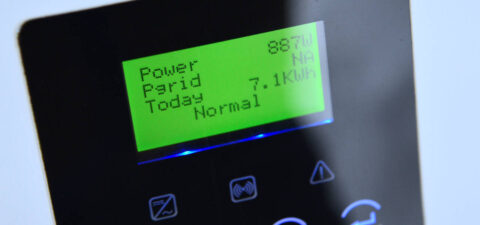Vehicle-to-grid (V2G) technology is a two-way power flow system that allows electric vehicles (EVs) to store and discharge electricity back to the grid. This technology can potentially deliver several benefits, including improving grid reliability, reducing peak demand, and providing backup power during outages.

Many different V2G models are available, each with advantages and disadvantages. Some of the most common V2G models include:
* V2H: This model allows EVs to store off-peak, therefore cheaper electricity from the grid and discharge it back to the home during peak demand hours. Thus, reducing the amount of electricity that needs to be purchased from the grid, saving money on energy bills.
* V2G: Lets EVs to store electricity from the grid and discharge it back to the grid during high-demand periods — stabilizing the grid and reducing the need for expensive backup power generation plants.
* V2B: This could use EVs to store electricity from the grid and discharge it back to a building like an office or school, reducing the facility’s reliance on the grid, saving money on power bills and reducing carbon emissions, especially if the energy generated comes from a surplus renewable origin.
Vehicle-to-Grid — the Future for Electric Vehicles?
The benefits of V2G technology are considerable. V2G can help to improve grid reliability by providing a source of backup power during outages. It can also help reduce peak demand, saving money on energy costs and reducing carbon emissions. Additionally, V2G can provide a new source of revenue for EV owners, who can sell their excess electricity back to the grid.
Nevertheless, there are also some challenges associated with V2G technology. One challenge is that V2G requires bidirectional charging infrastructure, which is not yet widely available. Another challenge is that V2G can impact the range of EVs, as the battery will be used to store and discharge electricity. Additionally, V2G can be complex to manage, requiring coordination between the EV, the grid, and the utility company.
Despite the challenges, V2G technology has the potential to play a significant role in the future of the energy grid. V2G can help to improve grid reliability, reduce peak demand, and provide a new source of revenue for EV owners. As V2G technology develops, it will likely become more widely adopted.
Here are some of the models of EVs that are currently available with V2G capability:
- Nissan Leaf: The Nissan Leaf is one of the most popular EVs on the market and one of the few available with V2G capability. The Leaf can store up to 30 kWh of electricity and discharge that electricity back to the grid at a rate of up to 3.3 kW.
- Hyundai Ioniq 5: The Hyundai Ioniq 5 is a new electric SUV that is also available with V2G capability. The Ioniq 5 can store up to 77.4 kWh of electricity and discharge that electricity back to the grid at a rate of up to 11 kW.
- Kia EV6: The Kia EV6 is a new electric SUV that is also available with V2G capability. The EV6 can store up to 77.4 kWh of electricity and discharge that electricity back to the grid at a rate of up to 11 kW.
- Ford F-150 Lightning: (US Market) The Ford F-150 Lightning is a new electric pickup truck that is also available with V2G capability. The Lightning can store up to 131 kWh of electricity and discharge that electricity back to the grid at a rate of up to 9.6 kW.
As V2G technology develops at pace, more and more EV models will likely be available with this capability. As a result, V2G can potentially provide several benefits for EV owners and the grid, and it is a technology worth watching.
UK innovative charging EV platforms with V2G & V2H capabilities.
UK energy suppliers are beginning to offer special tariffs for electric vehicle owners, from off-peak charging rates to dynamic pricing models which charge your vehicle when prices are low. The leading players are Octopus and OVO Energy. The key to this technology will be installing a bidirectional charging point in your home, which communicates with the relevant intelligent charging software platforms. These platforms will offer cheaper charging rates and allow you to return energy to the grid. Hopefully, at a profit!
These technologies offer opportunities to optimize the charging patterns of EV batteries, which should ultimately lead to longer battery life, alongside building a more balanced and efficient energy system where less energy goes to waste.

































